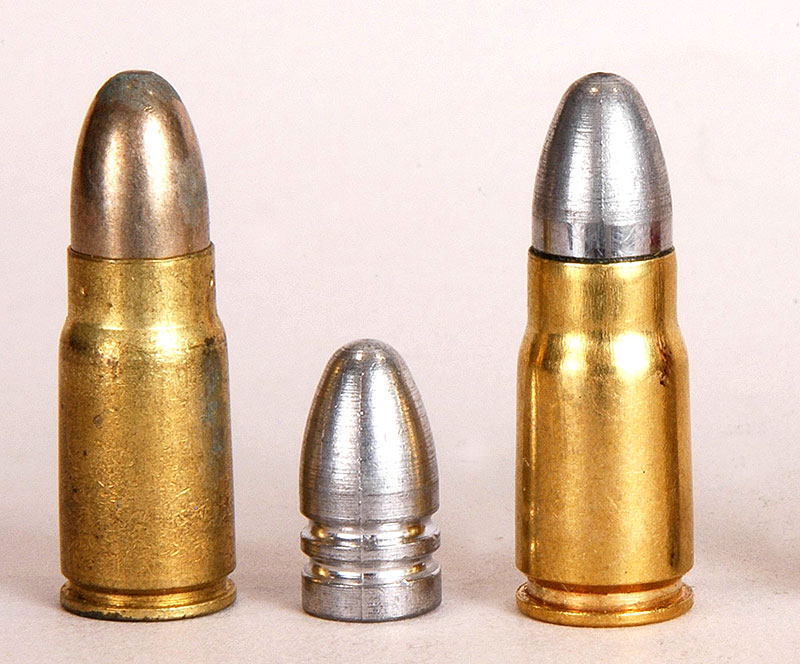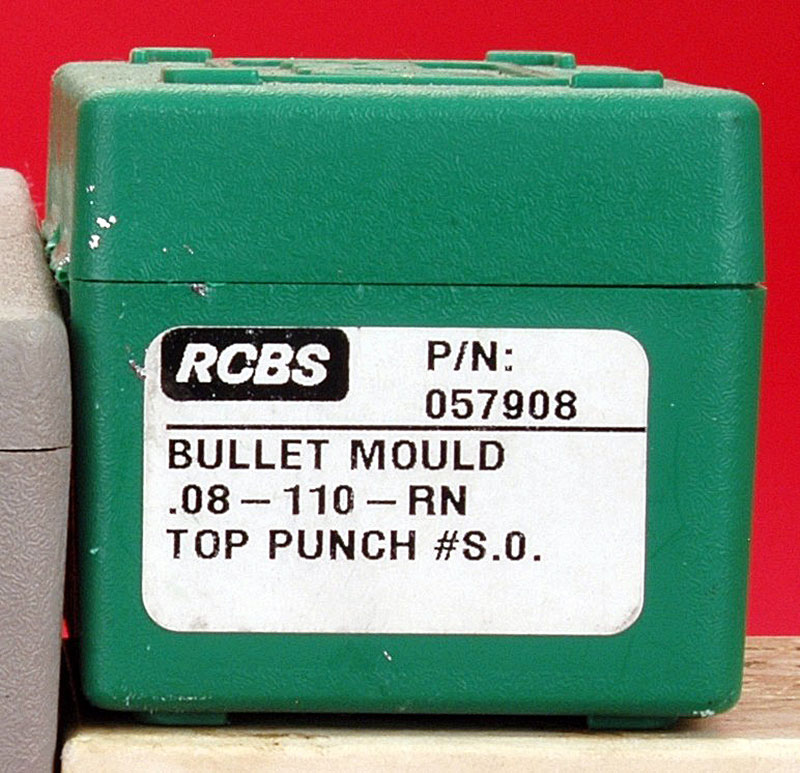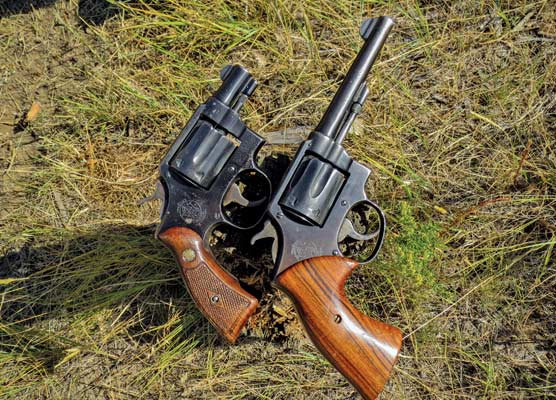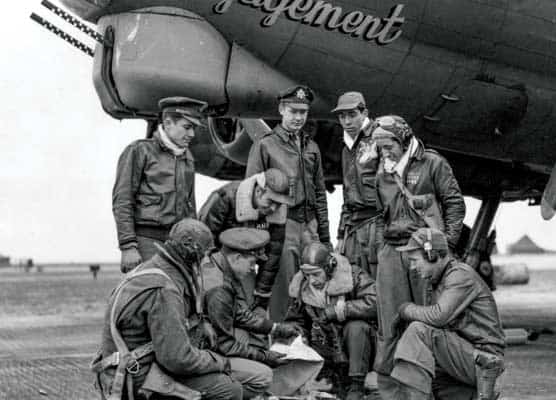Handguns Of WWII, Part 2
Japanese Type 14 8mm Nambu
Part 2 Of A 13-Part Series
As with so many Americans during most of my life, I felt nothing but disdain for Japanese firearms. In fact in the pages of American Handgunner I’ve written that “I’m not about to spend my hard-earned gun’riter bucks on a Nambu pistol!”
But I did just that and have not regretted it for a moment. Here’s how it played out. A friend put me onto a Type 14 8mm Nambu in a Montana pawnshop. It was priced attractively, though the reason for that I learned trying to fire it for the first time. Its firing pin was broken, and I soon discovered Type 14 firing pin breakage was so common they were issued with a spare, and their holsters were built with a small slot for storing it. Furthermore, the problem of broken Type 14 firing pins is common enough that getting them re-pinned isn’t difficult, and complete firing pins of new manufacture are available. I had the broken original pin fixed, and bought a couple of spares also.
In 1925 the Imperial Japanese Army, followed by their navy in 1927, adopted the Type 14 8mm pistol, commonly just called Nambu, after the Japanese officer chiefly credited with its design. It was built at both Nagoya and Tokyo government arsenals, pre-1937. However, during the 1941-1945 period, Type 14s were only manufactured in the Nambu-Seisakusho factory located in Tokyo. Production continued right until the Japanese surrender in August 1945.
Barrel length of all Type 14 pistols is 4.6″ and caliber is 8mm Nambu, which is related to no other pistol cartridge worldwide, and magazine capacity is eight rounds. Grips are wood and serrated — not checkered. Finish was blue and quality of manufacture was superb, even if the basic design was not. That will be covered shortly. Type 14 sights are not different than most military pistols of that era — an inverted V-shaped blade front dovetailed to a stud on the barrel and a notch for rear. Only windage can be adjusted by drifting the front sight in its dovetail. However, elevation could be changed by installing different heights of front sight blade.
Odd Balls
Dating Type 14s is easy. On the right side of the frame will be two numbers, such as the 19-1 on mine. The first number stands for year of manufacture starting in 1925. The second number is the month of production. Therefore my Type 14 was made in January 1944. A mere glance can tell if the Type 14 was made pre or post 1939. After that year the trigger guard was enlarged so a gloved finger will fit.
Type 14s are rather odd as far as military handguns go, in that instead of a reciprocating slide, its mechanism consists of a round bolt working inside a tube. If that seems hard to imagine, then consider a Ruger Mark I .22 pistol. Bill Ruger borrowed the Type 14 idea for his very first commercially produced handgun. Also, the 8mm Nambu cartridge is like no other dimensionally. Its bullet diameter is .321″ and its case is bottlenecked in shape. Japanese military ballistics called for a 100 gr. bullet at about 1,000 fps. By most nations’ military standards, that’s puny.
Besides the weak cartridge, Type 14s have several other flaws for a combat handgun. One is that two hands are required to operate the safety. Another is there is a magazine disconnect. That means the pistol cannot be fired at all if the magazine is lost. That brings up one other point about Type 14 holsters. While they have a slot for a spare firing pin they do not have a slot for a spare magazine. A third flaw in Type 14 design is there is no bolt hold-open device. When the last round is fired the bolt is held rearwards only by the magazine follower. To remove an empty magazine requires considerable effort because the bolt is pressing against it and it slams closed as the magazine is released. Then to get the pistol in operation again after a fresh magazine is loaded, the bolt must be pulled rearwards all the way.
Interestingly, both the Imperial Japanese Army and the Imperial Japanese Navy had paratroopers in World War II. When dropped in combat, their shoulder-fired weapons were encased in containers and dropped separately. The paratroopers only carried pistols and grenades. IJN paratroopers were only given the much more poorly designed Type 94, also chambered for the 8mm Nambu cartridge, but IJA paratroopers carried a mixture of Type 94s and Type 14s.
Shooting
None of the pistols in my World War II collection are there for decoration. I shoot all of them, and 8mm Nambu cartridges are the hardest caliber of all to obtain. Most likely some custom ammunition maker offers them but no new factory made 8mm Nambu ammunition exists. That said, handloading it is simple. Brand new brass manufactured by Starline is available from Huntington Die Specialties. Reloading dies and the unique shell holder are made by RCBS, and likewise RCBS offers a custom 8mm Nambu bullet mould. It’s rated at dropping 110 gr. roundnose bullets.
Bullets from my die weigh 106 grains when poured of linotype alloy. Mine are sized to .323″, also in an RCBS-made sizing die. Working slowly and carefully with fast burning Hodgdon Titegroup propellant, I finally settle on a charge of 3.5 grains. That propelled the 106 gr. bullets to 999 feet per second, and gave perfect functioning from my pistol and from a friend’s Type 14. Huntington Die Specialties also sells copper plated 8mm Nambu bullets of .320″.
The Type 14 is a pleasure to shoot. I find mine very accurate and with mild muzzle blast and recoil. While I wouldn’t want to depend on a Type 14 to defend myself, I’m glad I bought this one. My collection couldn’t be complete without it.
Click here to links to all the 13-part on-line series of Handguns Of World War 2 articles.









